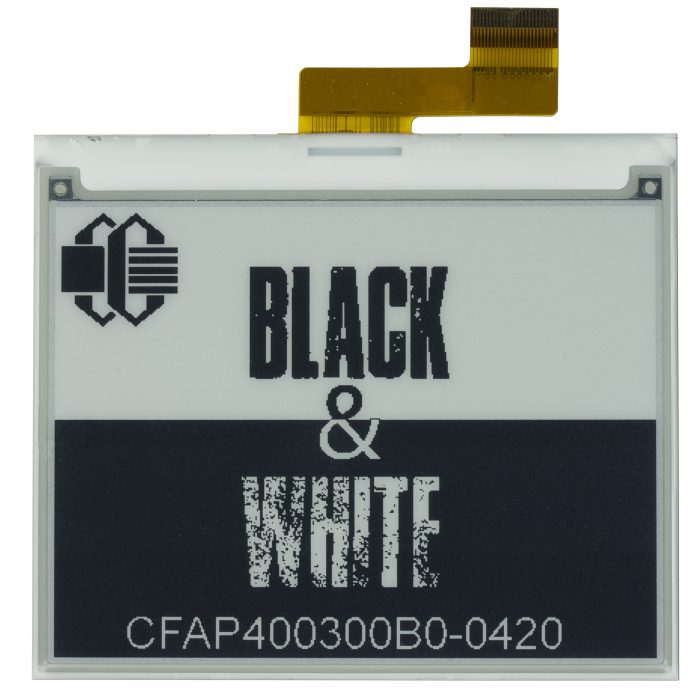
FAQ: How does ePaper work with such low power consumption?
Electronic paper or ePaper modules have one outstanding feature: Once an image is written to an ePaper module, the image will stay there indefinitely, even if no power at all is supplied to the ePaper module.
How does ePaper work?
It is done with one of the first widely produced examples of nanotechnology. Inside the ePaper are very tiny charged and colored particles. The ePaper controller IC uses electric fields and clever algorithms to migrate the correct color particles to the front of the display, which creates an image. The particles and display structure are designed in such a way that once the particles have migrated to the desired position, they will stay there indefinitely–without any power applied.
There is some power used when the image is written–but that power only needs to be supplied during the refresh cycle. As soon as the refresh cycle is complete, you can completely remove power from the module.
For the lowest possible ePaper average power consumption:
- Make your updates as few as possible and as far apart as can meet your needs.
- Choose an ePaper that updates quickly (typically monochrome–color and grey scale have longer refresh times)
- Be sure to remove all power from the ePaper module.
One method would be to use a FET to disconnect the power pin completely while driving all the I/O lines to ground.
Another method would be to send the appropriate sleep commands to the ePaper module’s controller.This may vary per controller, so feel free to contact Crystalfontz Technical Support if you need any assistance with these commands.
What other features make Crystalfontz ePaper modules an attractive display solution for embedded electronics?
- ePaper modules typically have much higher resolution than a similarly sized LCD. This makes for crisp, easy-to-read text and images.
- ePaper is a reflective technology, so no power is used to light up the display. The general rule is this: If you could read a piece of paper, you can read an ePaper display.
- Because ePaper is reflective, it is also sunlight readable. Unlike many embedded display technologies, more light makes it easier to read.
- If you absolutely must have a display that is readable in dark environments, we do have some frontlights available for selected ePaper modules. Be aware that the power consumed by the frontlight negates the embedded ePaper display module’s primary advantage of low power.
What are some limitations of ePaper?
- The biggest limitation of ePaper is the refresh time. This can vary from less than 1/10 second for partial-refresh monochrome ePaper modules to up to 20 seconds for color ePaper. During the refresh, the display typically flickers which can be distracting.
- ePaper colors are limited, currently, there are monochrome(black/white), monochrome greyscale, and red/black/white and yellow/black/white. There are not any full-color embedded ePaper modules currently available.
- ePaper modules require a simple voltage boost power supply circuit. For larger production, you will want to design this circuit onto your PCB. For prototyping and small production, Crystalfontz has created the CFA-10084 which allows you to get your ePaper project moving quickly.
Is ePaper right for your project?
If your application can benefit from super low power, and your display data does not change frequently, a Crystalfontz embedded ePaper module may be a fantastic solution to your display requirement. Call, email, or chat with our friendly support team to discuss what module works best for your project.